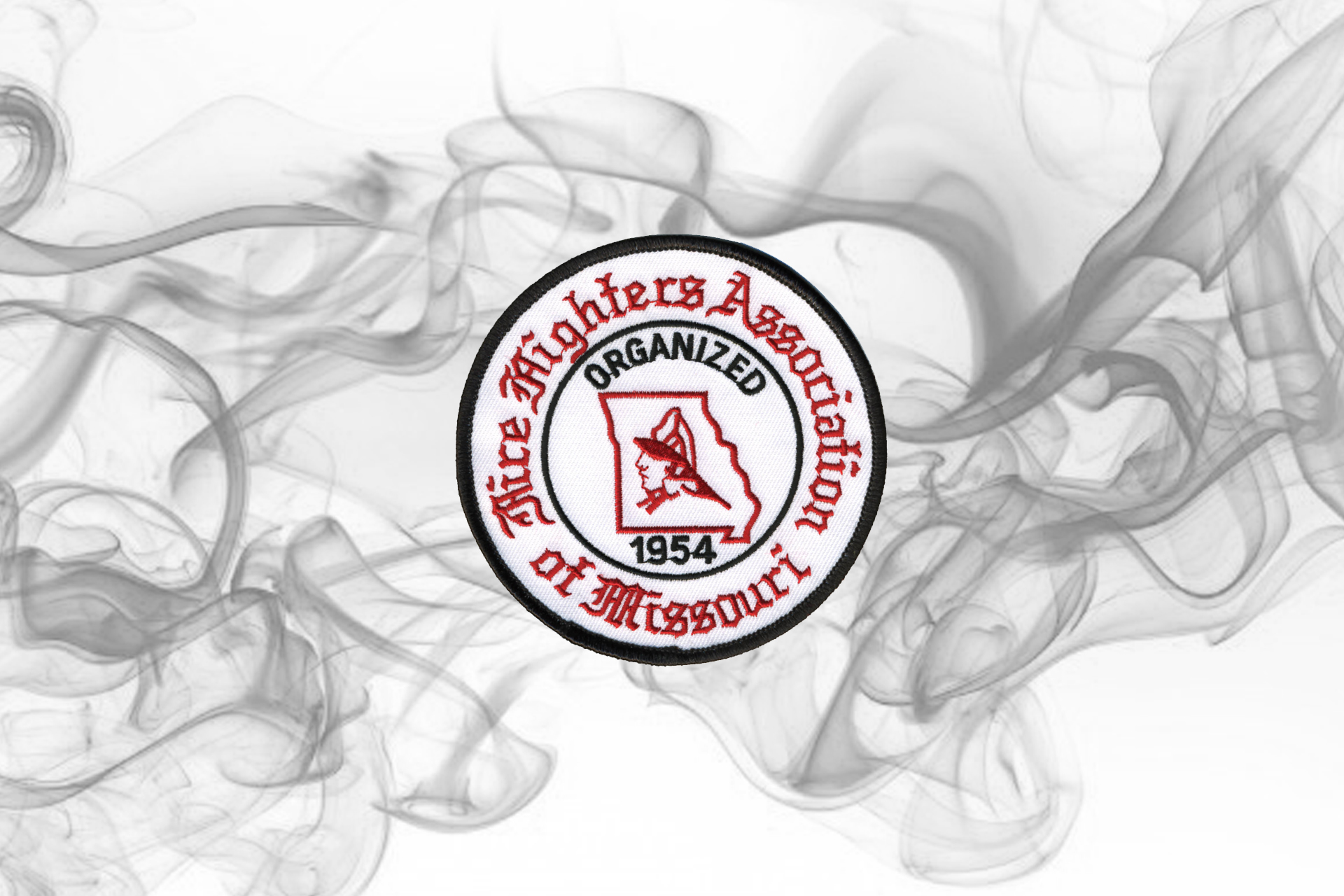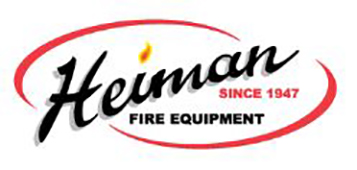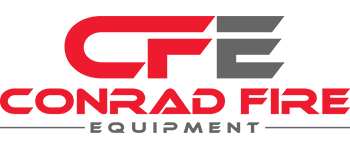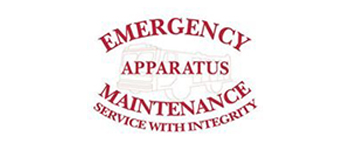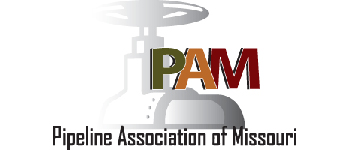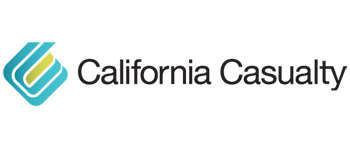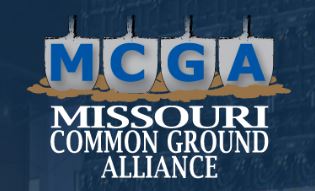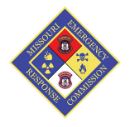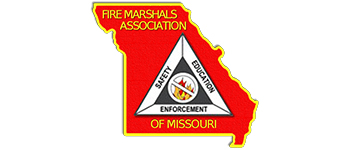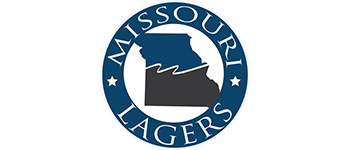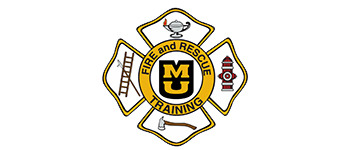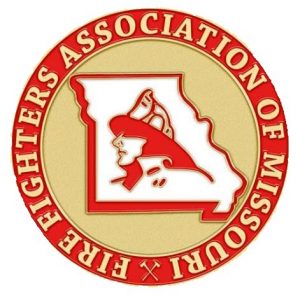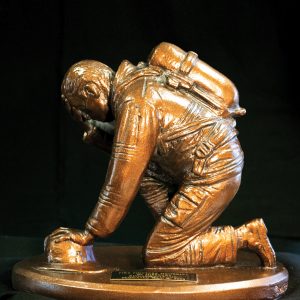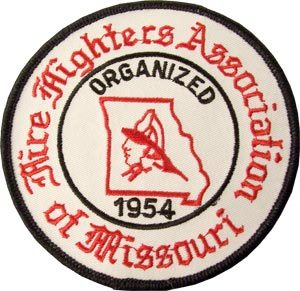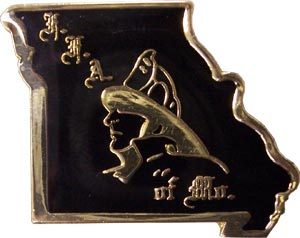ATTENTION! This is a 911 call to action! This is not a drill. If this Emergency Response Rule is passed as currently presented it will eventually impact the Missouri Fire Service either in a very direct way or indirectly for everyone else. PLEASE REVIEW AND TAKE ACTION which will be outlined at the end of this article.
OSHA’s New “Emergency Response Rule” Update.
In my last OSHA article in the March-April Magazine, I started an overview of the December 21 announcement that the Occupational Safety and Health Administration (OSHA) will issue a Notice of Proposed Rulemaking (NPRM) to modernize the agency’s “Fire Brigades” standard, first published in 1980. This is currently being proposed for the 29 OSHA States which Missouri is not, BUT I WILL GET BACK TO THAT. There is zero doubt in the mind of those familiar with OSHA that the remaining 21 non-OSHA States will follow if anything is passed into law within those 29, just at a later date.
If you were not able to review the previous article from March-April that might be helpful before proceeding with this update as I will provide the initial background. I will not be repeating any of those three pages with this update. The 90-day comment period deadline originally set has been extended to 45 days (not the 120 that was requested) with the new date set as June 21. There is an aggressive attempt for more time, but unless their comment portal is “FLOODED” with concerns, that will happen short of legal intervention which is also underway by NVFC and perhaps others since they have become aware. I will come back to the “SURVEY and COMMENT PORTAL” later.
First, no one is discounting that there could be room for improved firefighter safety, and NFPA plus other standards are a valuable guide in getting there but not as a club which could and “WILL IN SOME CASES” cripple some departments and potentially close others in low populated areas due to extraordinary budget limitations, keep reading!
Let me give you a few key initial snapshots of what the Missouri Fire Service could be facing if this “Emergency Response Rule” should pass in the OSHA States as currently proposed and then be rolled over into the 21 non-OSHA states. It is worth saying again, “Make no mistake, it will be coming if passed because OSHA has always used the ‘meet or exceed’ of their standard since 1972 for any State plans and this will simply apply in reverse.” So, what could the future hold as an operating fire department?
There are 22 NFPA Standards and one ANSI that I will list further down later which will be “By Reference” (MANDATORY) by Federal Law. You currently enjoy these by adoption or not, modification or not and have options in crafting adjustments under “Authority Having Jurisdiction” in their applied application/implementation. That all goes away. These 22 NFPA Standards will become FEDERAL LAW from page one to page last and OSHA (not you) will be the authority with Federal Jurisdiction to enforce, fine and take to court. This is a MAJOR shift in local authority to the Federal level. These 22 NFPA documents have over 1,500 “SHALL” or “MUST” compliance words and those become the checklist by which OSHA will enforce, fine and bring criminal charges if they feel gross negligence has occurred. Their definition of gross negligence is a broad brush and essentially “any willful action in knowingly violating a standard” meets that threshold. So, you will need to be 100% on all of these or face fines/worse? If you just cannot do it, but knowingly proceed any way you could face a court of law. Sad day to stand in the street or stay in the station while Mrs. Smith is trapped in a burning house. We have not talked about the economic impact, that is coming.
There are also an additional 14 NFPA Standards that will be applied in part “By Fully Informed” which will have major parts included (Partial Adoption). While these are less than page one to page last, go ahead and add those to the 22 for a running total of 36 plus ANSI. Get your sleep now because you are now approaching 10,000 pages of reading of which you must ensure compliance, implementation, training and records management. Yes, we already do much of this but adjusted to fit local capability, staffing and budgets. Those ARE NOT a consideration in the current OSHA proposal, and you get to check each of those 1,500+ Shall/Must-do points.
A current belief that volunteers are not going to be included in all of this is “WRONG.” You will be either directly or indirectly impacted. In many of the OSHA states, volunteers are considered employees by how their labor/contributions are defined and recognized. The volunteers will be excluded because of the operating belief and working under the radar we seem to embrace in Missouri but most of the OSHA States view the volunteers as employees. Unless OSHA specifically excludes volunteers (which they have not at this time), those in the OSHA States will be included. For Missouri, many could be directly included just by LOSAP programs, stipends, and paid-on-call (others?) because they are forms of compensation for work rendered. Another yet unanswered but possible connection will be responding to a facility that is covered by OSHA. That is a BIG ONE which is massive exposure for volunteer departments. There are other possibilities, but you get the picture. Indirectly, all departments no matter how small could potentially face 3rd party liability at a level never even imagined because those 22 + 14 & ANSI standards are the new law of the land and a new level of legal exposure for any volunteer department which still thinks they are not going to be impacted by this. A little more on that later.
So, let’s view the list of 22 NFPA Standards which will be 100% required. All of it:
- 1001, Standard for Structural Fire Fighter Professional Qualifications – 2019
- 1002, Standard for Fire Apparatus Driver/Operator Professional Qualifications – 2020
- 1005, Standard for Professional Qualifications for Marine Fire Fighting for Land-based FF – 2019
- 1006, Standard for Technical Rescue Personnel Professional Qualifications – 2021
- 1021, Standard for Fire Officer Professional Qualifications – 2020
- 1081, Standard for Facility Fire Brigade Member Professional Qualifications – 2018
- 1140, Standard for Wildland Fire Protection – 2022
- 1407, Standard for Training Fire Service Rapid Intervention Crews – 2020
- 1582, Standard for Comprehensive Occupational Medical Program for Fire Departments – 2022
- 1910, Standard for Inspection, Maintenance, Refurbishing, Testing, and Retirement of In-Service Emergency Vehicles and Marine Firefighting Vessels – 2024
- 1951, Standard on Protective Ensembles for Technical Rescue Incidents – 2020
- 1952, Standard on Surface Water Operations Protective Clothing and Equipment – 2021
- 1953, Standard on Protective Ensembles for Contaminated Water Diving – 2021
- 1971, Standard on Protective Ensembles for Structural Fire Fighting and Proximity Fire Fighting – 2018
- 1977, Standard on Protective Clothing and Equip. for Wildland Fire Fighting & Urban Interface – 2022
- 1981, Standard on Open-Circuit Self-Contained Breathing Apparatus for Emergency Services – 2019
- 1982, Standard on Personal Alert Safety Systems (PASS) – 2018
- 1984, Standard on Respirators for Wildland Fire-Fighting Operations & Wildland Urban Interface Ops – 2022
- 1986, Standard on Respiratory Protection Equip. for Tactical & Technical Operations – 2023
- 1987, Standard on Combination Unit Respirator Systems for Tactical & Tech. Ops – 2023
- 1990, Standard for Protective Ensembles for Hazardous Materials and CBRN Operations – 2022
- 1999, Standard for Protective Clothing and Ensembles for Emergency Medical Operations – 2018
- ANSI/ISEA 207, American National Standard for High-Visibility Public Vests – 2011
Just in case reading to this point has not caught your attention, I will put a few of these pieces together as OSHA has planned in all of this before listing the next 14 “By Reference”. If you want to be a Firefighter, you must be Fire I & II certified which includes all of hazmat. We cannot argue with being trained to Fire-I but this action by OSHA as it stands requires Fire-II (AND MUCH MORE). Those departments with big budgets will have no issues with this one but what about those departments which still have staff without Fire-I or even Fire-II. THERE ARE NO GRANDFATHER PROVISIONS IN THESE FIRST 22 STANDARDS. At least not as currently presented. This gets even worse. If you want to meet the OSHA standard in responding to and extinguishing a natural cover fire you must be Fire-II (OK) AND must be a Driver/Operator (1002) if you are driving the truck. Those fighting the fire must also have 1140, 1977, and 1984. Just in case you are sending a Lieutenant or a Captain on the call they must be Fire Officer-I. For your larger fires, all chiefs except the Department Chief must be Fire Officer-II. Remember that Instructor I (II) is required along the way. The Fire Chief of the department (Paid or Volunteer) must have Officer III.
QUESTION?
If you are reading this as a Fire Chief, do you have Fire Officer-III? Fortunately, you live in a State that your Fire Marshal has seen to that being offered (even the 1st Officer lV class completed). Fun fact, when the room was polled of NVFC Directors for OSHA States that offer the Fire Officer-III program there were six who responded as no, just FO-II.
For those of you who have fireboats or some type of marine fire equipment regarding water emergencies, you must fully comply with 1952 and 1953 and hopefully you already do, but if not??
How many want new trucks? When 1910 is applied, anything greater than 15 years old shall be retired. Did you just see $$$$$? In my department of 9 trucks (pumpers tankers, brush and a ladder) we have two that are less than 15 years old. In terms of an unfunded financial mandate, this is emerging as the most significant pain point in terms of $$$$ of all the groups and there is no new money for this unfunded mandate. Nothing 200+ Billion cannot solve, right? In addition to the citation, fines, and willful violation exposure, this is also a tremendous 3rd party liability exposure to the department, especially those that are already razor thin. This will likely impact the volunteer department the most and another fun fact. You may want to rethink any more home-fabricated truck projects. OH! What was the last projection on new truck deliveries?
The following 14 NFPA Standards are “By Fully Informed” applications and will have major parts included:
- 600, The Facility Fire Brigade Standard
- 1900, Aircraft Rescue
- 1201, Providing Fire and Emergency Services to Public
- 1451, Aircraft
- 1500, Fire Department Safety & Health
- 1521, Safety Officer
- 1561, Incident Management System
- 1581, Infection Control
- 1660, Emergency Preparedness
- 1700, Structural Firefighting Strategy & Tactics
- 1710, Staffing & Deployment
- 1720, Suppression – EMS – Special Ops
- 1851, Selection, Care & Maintenance for Structural FF Gear
- 2500, Operations & Training for Technical Search & Rescue Incidents and Life Safety Rope/Equip.
So now with most of what is happening by standard revealed, I will bring up the next flash point regarding the age of your gear. We should be aware by now of the 10-year rule on gear and the massive heartburn of retiring perfectly good gear based on age versus condition. Under OSHA, this will be an absolute rule. Minnesota is an OSHA State and they reported that compliance officers have entered several fire stations and issued citations for gear greater than 10 years old. An argument is to be made that it was not being used, just stored but the compliance officer’s position, if it is in the station, it can be used so therefore at risk of injury.
QUESTION?
How old is ALL your gear and what will be the cost to replace it?
Age continued
With a question on the age of all equipment now defined by OSHA Standard and now you add SCBA’s, hose, etc., etc. A random thought for me in this was: What do we do with all the items we normally gift to other departments which is much newer than they have or just do not have? Now do we put it in the dumpster? What will be the new reality of liability to the provider in doing this? If we make them sign away any liability, that sets them up for criminal exposure with OSHA because this becomes a willful act. I could go on but hopefully, you start to see the varied exposures with gifting older equipment.
Ever thought about annual firefighter physicals but just could not get it in the budget. Well, now you “SHALL” find a way to do so. Tons of discussion on this one with costs ranging from as low as $250 to $600 but several in the room mentioned rechecking with their provider to meet the NFPA Standard, some were not fully sure, and some said likely no, and would not sign onto that.
3rd Party liability
This is what everyone could be faced with in not being able to meet the proposed update if adopted as is or even in part. This would be applied as the minimum standard that the fire department will be held to in all of its operations. If you fail/miss something, a 3rd Party Liability claim could arise. While such cases could be years off in the making of the actual trial/appeal processes, the overview could look something like this: a department responds to an emergency which results in much less than a planned or hopeful outcome. In this case (pick one of a thousand) a small room and contents house fire that results in a near or total loss of the home although the fire department was on scene and working while the fire was small. Everyone has had one or more of these in their career and we know there are numerous factors that came to bear. Anyway, the owner or more likely the insurance company investigates and discovers the pumper was more than 15 years old or the engineer did not have a driver operator or not everyone working on the fire ground was Fire-II or the Chief running the call was not Officer-III. Any one of these four, especially 2 or 3 would be grounds for setting up a successful operational liability judgment against the department. This is because one or more of those factors could have been the “Proximate Cause” of this negative outcome thanks in no small part to this proposed ruling. Public image takes a hit and operational liability insurance premiums go through the roof.
Surprisingly the League of Cities was not aware of this until NVFC brought it to their attention. They are now VERY interested. If implemented, municipal governments will have to overhaul City/County budgets to comply by cutting other essential services because of the “Federal Mandate”. Fire Protection Districts will have to secure new revenue but what if the voters say no to a tax increase or bond?
OSHA is totally uninformed on nearly all of this, especially the volunteer departments having projected the average annual cost to each volunteer fire department at $14,551 or 4.99% of the average volunteer department budget. Let’s look at the OSHA math and one can quickly conclude that they are clueless! That number projects that the average volunteer fire department takes in $291,000 per year and 5% of that budget is $14,551. First, 40% of the nation’s volunteer fire departments have budgets less than $100,000 and after seriously reviewing the required changes, does anyone believe the actual annual cost in all of this will be $14,500? There is obviously no truck payment in that budget number. There are numerous similar examples regarding this clue-less understanding of the volunteer fire service in their approach to all of this but just to give one more before moving on. They used most of their statistical data from CDC (Centers for Disease Control) vs. NFA (National Fire Administration). What is that saying about starting wrong, and staying wrong?
NVFC is taking action
They have a task force of some of their best on this and no, that is not me. I am just the messenger in this case. They have pulled $50,000 out of their reserve fund to retain a legal counsel on ways to slow what has already been put into motion. No one in the room was overly optimistic about putting the genie back in the bottle, but there will be an effort. They are looking at possible State Attorney Generals that might sign on to a class action regarding this. Remember, the State of West Virginia A.G. recently took on the Federal EPA and won. Numerous avenues of quickly sharing this information are underway because June 21st looms large. That includes getting the public involved and to that end, their Congressional Representative. New York is meeting with Senate Chair Chuck Schumer. The Congressional Fire Service Dinner is May 29th and 12 NVFC Directors are attending with a laser focus on getting the word out to anyone willing to listen. Social media is gearing up including serious thought in the free PSAs that Radio Stations must provide to build grassroots support in curtailing this which hopefully will involve reaching out to their reps.
What can you do? Get involved!
The Federal e-Rulmaking Portal can be accessed at www.regulations.gov From there all submissions must include the agency name and Docket No. which is OSHA-2007-0073. You may submit comments and attachments identified by this docket number. The Portal for this docket number closes on June 21, 2024. As of May 25, there were only 760 comments and New York State was half of those. Comments need to be in the tens of thousands. One Director indicated there needs to be 76,000 comments. Now that this is finally revealed, out of the shadows and people are becoming alarmed at the impact, they hope this will quickly increase in numbers.
Your comment needs to be in fact and numbers and especially the $$$ impact. Describe your department to OSHA: How many people are in your department? What’s your budget? What are the makeup and challenges of your service area? Do you have the funds to comply with any of these proposed standard? Do you have the staffing to comply with this proposed standard? How would your area be negatively impacted if your department had to shut down due to this standard? Does your department rely on fundraising for much of your income? If so, how many pancake breakfasts, raffles, or spaghetti dinners would you need to hold to comply with this proposed rule? Would your municipality be able to assist you in covering the costs of this proposed rule? If not, why? What specific provisions of this proposed rule are the most difficult for your department to comply with? Why are they difficult? What alternatives to this proposed rule should OSHA consider to improve the safety of firefighters? They will not accept leaving things as they are unless Congress sends that message, but this is not the portal for that argument. This is being approached on multiple fronts.
The FFAM webpage is being set up with a link to another page that is being dedicated to OSHA’s New “Emergency Response Rule.”
I will be posting updated information and several documents that will be identified by date first and name second. If possible, we will stack the most recent addition at the top and then work down. NVFC is working hard at trying to concentrate this down into a two-page fact sheet. Keep in mind this all started as 640 pages. Some very smart NVFC Directors worked this down to 22 pages. Getting this concentrated to a two-pager remains to be seen. They hope to have something close by May 6th, Once received, it will be posted with other docs – just in case you may need more information to work on this.
Thank you so very much for having read this sorted mess of things to this point. Again, while the battle is not immediately in the 21 non-OSHA States right now, any addition of this proposal to the other 29 will eventually find its way over here. We need to help those in this struggle at this moment.
If you have questions, I will try to assist or get them answered by one of the Task Force members. You may call at 314 709 0760 or email keith.smith@warrenton-fire.org.



